2018
Think Spring, Think Foundation Seed
The calendar suggests it is time to begin preparing for the next growing season even though the past month has presented many with challenges completing harvest of the current season’s crops. Beyond fall field work and fertilizer applications, current preparations may also include lining up seed for the 2019 season. With this in mind, I send this note to update you on the status of foundation grade seed stocks available at the Carrington Research Extension Center. Harvest at the Center is complete and we have been working on cleaning and conditioning our seed stocks since soon after field day. Our seedstocks program has again produced and harvested a diversity of crops and varieties that present options for the coming season. The weather conditions up until recently were favorable for harvest which allowed a timely harvest of each crop and subsequently high quality seed lots.
To help you plan for your spring 2019 seed stock plantings, listed below in the following table are the foundation grade seedstocks that the CREC has available in our inventory.
| Crop | Variety Available at the CREC |
|---|---|
| Barley | ND Genesis, Lacey, Pinnacle and Tradition |
| Buckwheat |
Manor |
| Durum | Carpio, Divide, ND Grano, Joppa and ND Riveland |
| Flax | ND Hammond, Gold ND, Omega, and York |
| Soybean | ND Benson, ND18008GT, ND17009GT and ND Stutsman |
| Spring Wheat |
Elgin-ND, Faller, Glenn, Lang MN, Shelly and ND VitPro |
| Winter Rye |
ND Dylan (for fall 2018 planting) |
The CREC has four new varieties that are publicly available after being distributed through the CCIA last spring. These include two durums, one flax and one soybean. These varieties will be protected under Plant Variety Protection (PVP) Title V. They must be sold as a class of certified seed.
ND Grano Durum has a high yield potential, with good seed quality and has a low Cadmium (Cd) uptake. Of the varieties tested, ND Grano has the second lowest Cd uptake. Compared to Carpio and Joppa, ND Grano has higher test weight, smaller seeds and similar plant height. The leaf and stem rust resistance is similar to Carpio. The fusarium head blight (FHB) disease severity is similar to Joppa. DON accumulation is higher than Carpio or Joppa.
ND Riveland Durum has a high yield potential, with good seed quality and has a low Cadmium (Cd) uptake. Of the varieties tested, ND Riveland has the lowest Cd uptake. Compared to Carpio and Joppa, it is taller, has a higher test weight and larger seeds. The leaf and stem rust resistance is similar to Carpio. It has the lowest fusarium head blight (FHB) levels among all tested varieties. ND Riveland’s DON accumulation is lower than Carpio.
ND Hammond Flax is a brown-seeded variety that has high yield potential. From 2015-2017, it had the highest yield average across the state. ND Hammond has resistance to flax wilt and has good oil drying quality. It also is considered to have a medium maturity rating.
ND18008GT Soybean is a glyphosate resistant (GT) soybean with a relative maturity rating of 00.8. It is resistant to race 4 of phytophthora root rot, has soybean aphid tolerance and moderate tolerance to iron deficiency chlorosis (IDC). It also exhibits sensitivity to metribuzin herbicide (MTZ). This variety is patented and contains a certified seed only (CSO) clause. The clause states that only certified seed is to be used for planting. Seed may not be saved over for the purpose of replanting next year.
If you are interested in any of these varieties, I encourage you to call the Carrington REC at 701-652-2951 or e-mail at myrna.friedt@ndsu.edu. Other cultivars and additional quantities may be available from other Research Extension Centers and the Agronomy Seed Farm. The NDSU Foundation Seedstocks Pricing Committee will set seed prices for this year’s seed soon and the prices will be published in the near future. Within the NDSU Foundation Seedstocks program, seed orders received by December 1 will be given preference and priority when allocating foundation seed.
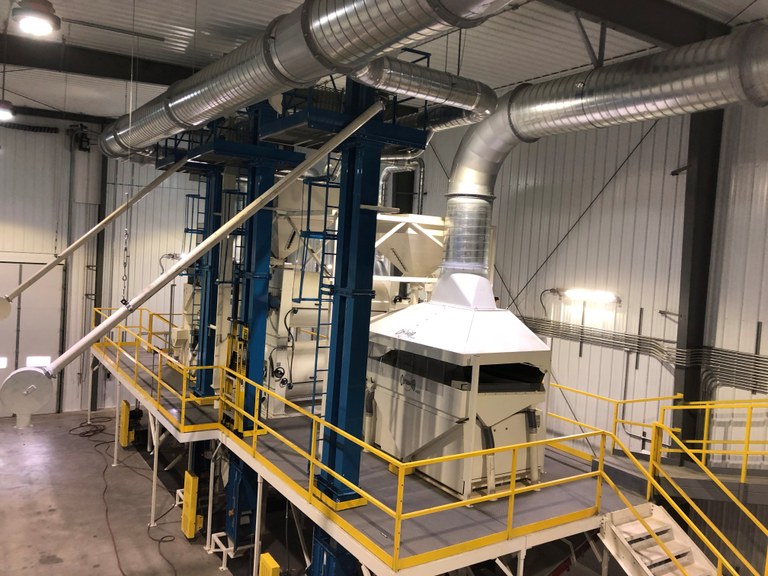
A peek inside the new seed mill at the CREC!
Dave Copenhaver
David.Copenhaver@ndsu.edu
Foundation Seedstocks Research Spec.
A Research Update on Dry Bean Seed Yield with Row Spacing and Plant Population
The NDSU Carrington Research Extension Center (CREC) has been conducting research to re-examine pinto, navy and black bean response to row spacing and plant population. Previous work with these two production factors in navy and black bean was conducted at the CREC in 1999-2000 (Schatz et al.).
A black and navy bean study was started at the CREC in 2014 with three row spacings of 14-, 21- and 28-inches, and targeted plant populations of 90, 110 and 130 (x1000) plants/acre (Figure 1). In addition, NDSU trials were conducted in Park River and Prosper, North Dakota with plant populations.
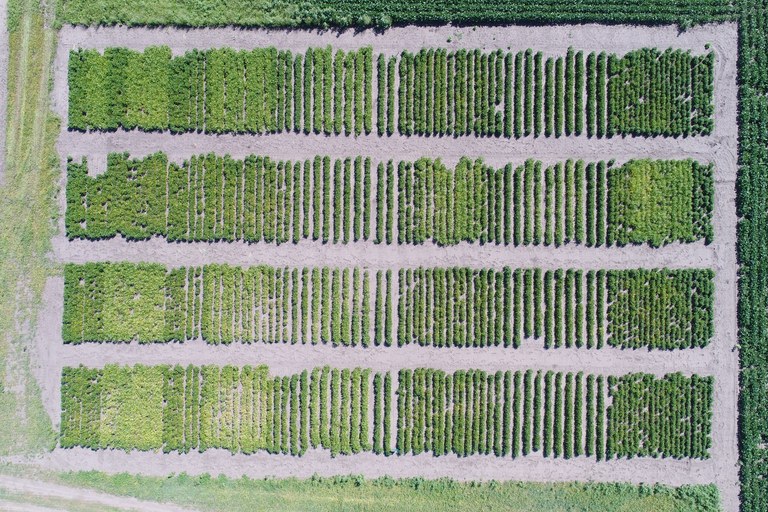
Figure 1. Navy and black bean trial at the CREC in 2017.
Navy bean plant populations averaged across three trials were 93, 117 and 140 (x1000) plants/acre. Navy bean seed yield was greatest (26.6-27.9 cwt/acre) with 14-inch rows and plant population at 117 and 140 (x1000) plants/acre.
Black bean seed yield averaged over four trials was similar among the three row spacings of 14-, 21- and 28-inches, though 21-inch rows tended to have greater yield. Black bean plant populations averaged across eight trials were 99, 119 and 141 (x1000) plants/acre. Averaged across the eight trials, black bean yield tended to increase with increasing plant populations: 22.9 cwt/acre with 99 (x1000) plants/acre; 23.3 cwt/acre with 119 (x1000) plants/acre; and 23.6 cwt/acre with 141 (x1000) plants/acre.
Pinto bean trials that included row spacing were conducted in 2011-13, and a trial with plant populations was conducted in 2013. A study with both factors was started at the CREC in 2018 with two row spacings of 21- and 28-inches, and targeted plant populations of 50, 70 and 90 (x1000) plants/acre (Figure 2). Averaged across four trials, pinto bean seed yield was 27.2 cwt/acre with 21- to 22-inch rows compared to 22.0 cwt/acre with 28- to 30-inch rows. Averaged across two trials, pinto bean yield tended to increase with increasing plant populations: 15.8 cwt/acre with an average stand of 58 (x1000) plants/acre; 17.3 cwt/acre with 75 (x1000) plants/acre; and 17.7 cwt/acre with 90 (x1000) plants/acre.
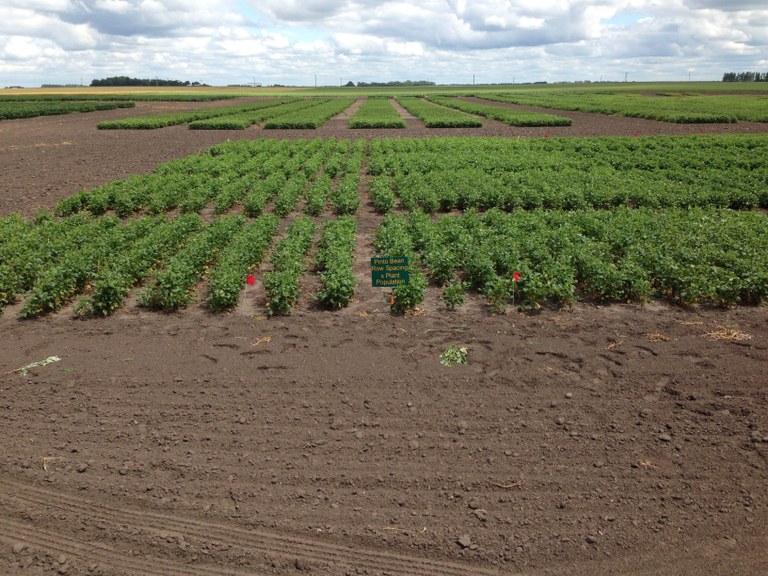
Figure 2. Pinto bean trial at the CREC in 2018.
Greg Endres
Gregory.Endres@ndsu.edu
Extension Agronomist
Cattle Feeding Events in October
The Dakota Feeder Calf Show and a Backgrounding Seminar series are two events for cattle feeders in October. These programs are for learning more about cattle feeding through backgrounding or finishing cattle.
The Dakota Feeder Calf Show is held in October 20 in Turtle Lake, ND. While the event is a celebration by the community, it revolves around cattle producers consigning groups of 3 or 4 calves to be fed to harvest. The calves are delivered to and then displayed at the Turtle Lake Weighing station on Saturday morning October 20. That afternoon the calves are shipped to the NDSU Carrington Research Extension Center Livestock Feedlot for feeding to finish. In May 2019, the calves will be shipped to slaughter in Nebraska. Calf owners are provided feedlot performance, carcass and financial information.
During the 2017‐18 DFCS feedout, the calves gained an average of 649 pounds in 207 days, with a total feeding cost (excluding interest) of 74.8 cents per pound of gain. The average sale weight was 1,311 pounds. The calves were fed with a market weight break‐even point of $121 per hundredweight.
In the 2017‐18 feedout, the spread in net return per head between the average of the top and bottom five herds was $170.17. The spread ($242.77 per head) is more noticeable between the top and bottom herd. Weight gain per day of age was 3.58 pounds for the top‐profiting herd and 3 pounds for the bottom herd.
To consign calves to the Dakota Feeder Calf Show Feedout, contact Karl Hoppe 701-652-2951 or Darwin Chesrown, Turtle Lake Farmers Union Oil, at 701‐448‐2356.
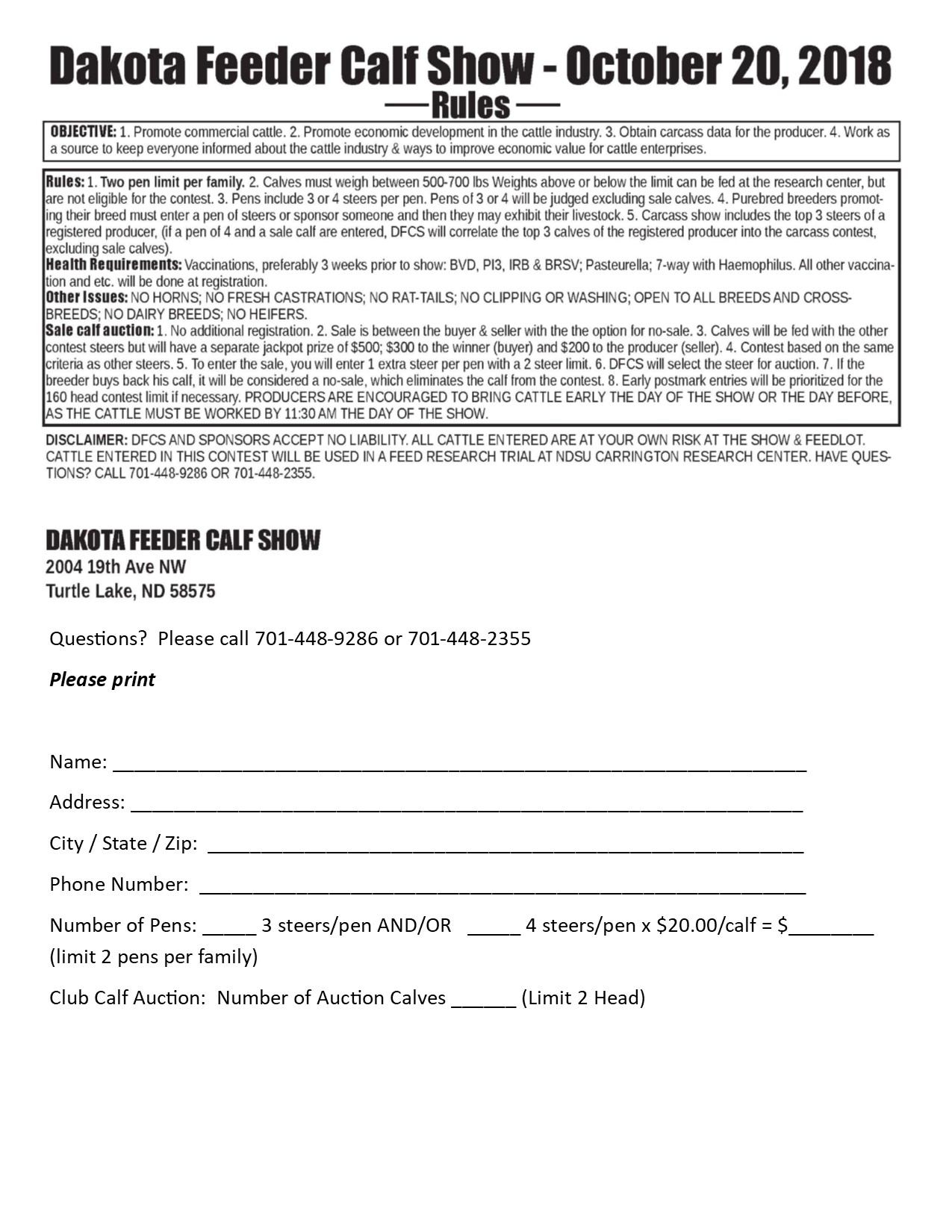
The NDSU Backgrounding seminar series will be held in multiple locations during October 16-18, 2018.
Topics for the meetings and presenters are:
- Local issues for cattle feeders
- Cost of gain and calf-growing rations
- Backgrounding calf management and budgets
- Weaning management
The dates, times and locations for the backgrounding series are:
- Oct. 16 - 8:30 a.m. CST, McVille, McVille Cafe
- Oct. 16 - 7 p.m. CST, Spiritwood, Sportman’s Bar
- Oct. 17 - 8:30 a.m. CST, Napoleon, Napoleon Livestock Auction
- Oct. 17 - 7 p.m. CST, Granville, McGillicuddy Center
- Oct. 18 - 8:30 a.m. CST, New Salem, Fairgrounds
- Oct. 18 - 7 p.m. MST, Killdeer, Ezra Barrows American Legion Hall Post 46
For more information, contact John Dhuyvetter at 701-857-7682 or john.dhuyvetter@ndsu.edu; Janna Kincheloe at 701-567-4323 or janna.kincheloe@ndsu.edu; Karl Hoppe at 701-652-2951 or karl.hoppe@ndsu.edu; or your local Extension agent.
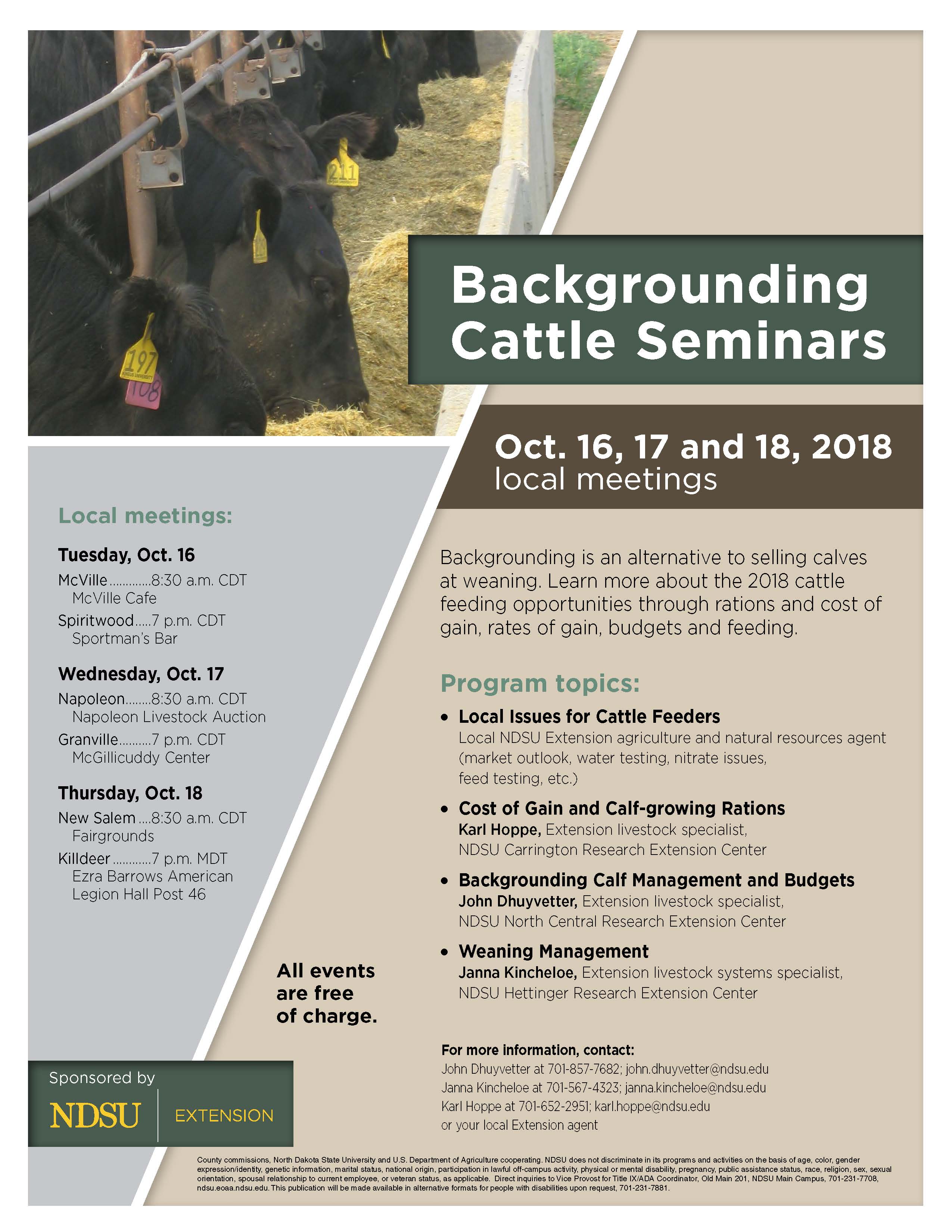
Karl Hoppe, Ph. D.
Karl.Hoppe@ndsu.edu
Extension Livestock Specialist
Hustle
Hustle – verb; to urge forward.
Like many of you, at the CREC we are in our season of hustle. It feels like just last week I wrote about staking plots and planting new seed and now, suddenly, we are nearing the end of harvest. Between the time of planting and harvest a lot of activity occurs here. Approximately 30 part-time staff are added to the roster near the end of planting and are vital to our summer activities including data collection, weeding plots, helping in the orchard and assisting with the many field days we host. Just like that, their time here is done and we’re left with what feels like a skeleton crew.
Nonetheless, the looming darkness of winter threatens and slowing down is not an option. Completing harvest, sampling soil, preparing fields for next spring and buttoning things up before the snow hits all require hustle. Besides the obvious outdoor activity, we also have some indoor hustling to do as well. Fall is not only a time of harvest, but also a time when grant applications are due, trial notes need to be completed and annual reports need to be written.
If you’re like me, you like the late fall season. It brings a sense of closure to the hustle. As the temperatures drop and hours of darkness lengthen, it gives an unspoken approval to slow down and reflect upon all we’ve accomplished throughout the year. Late fall is still a ways away and hustle is still required for a few more weeks, for us and you. As you work with urgency to complete your tasks this fall we implore you to put safety first. Working with a bit of hustle is one thing, rushing is another. An unnecessary accident often costs us more time and energy than we have left to give during this season in the cycle.
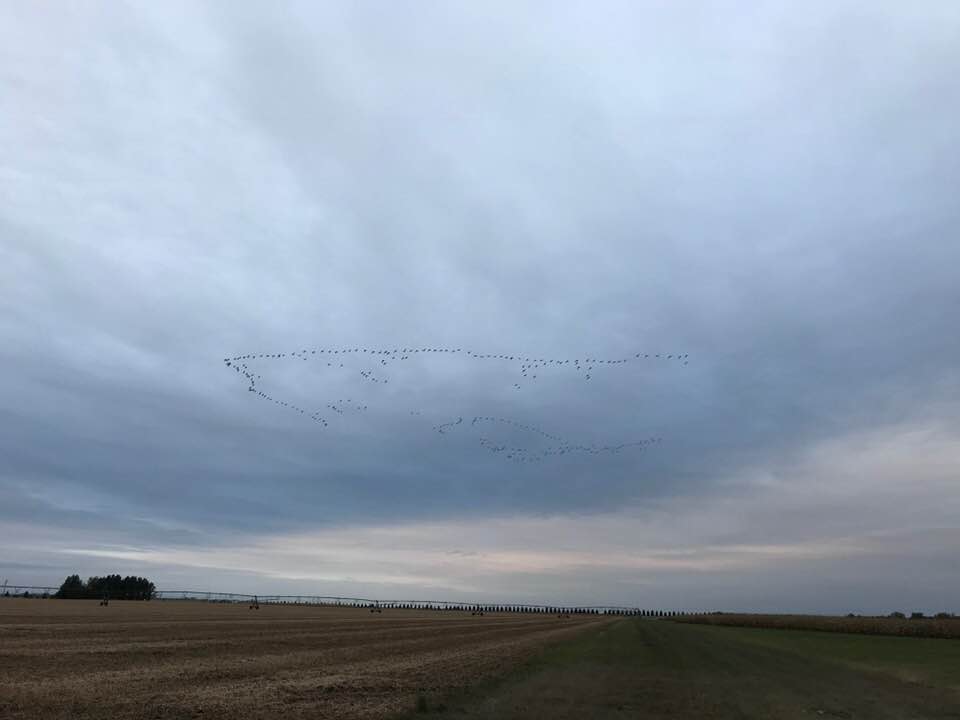
Geese fly over harvested and unharvested fields at the CREC during the early fall season.
Mary Keena
mary.berg@ndsu.edu
Extension Specialist, Livestock Environmental Management
Impacts of Bunk Management on Animal Performance and Hydrogen Sulfide Concentrations
Distillers grains are a main component of feedlot diets, with over 70% of surveyed nutritionists indicating that they include some form of distillers grains in rations at ranges of 10-30%. The amount of sulfur present in ethanol by-products has led to concern over the occurrence of polioenchephalomalacia (better known as polio; PEM), a neurological condition resulting from either thiamin deficiency or sulfur toxicity. Further, the concentration of hydrogen sulfide gas in the rumen has also been linked to onset of PEM.
Previous research has shown that the level of roughage and sulfur, source of sulfur in the diet, and even sulfur in the water can impact the concentration of hydrogen sulfide in the rumen or increase the risk of PEM. What research hasn’t explained is why some cattle with relatively low sulfur levels in the diet and reasonably low water sulfur still develop PEM. The objective of our research was to demonstrate how bunk management impacts cattle performance and concentration of hydrogen sulfide gas in the rumen.
One of the theories that we are testing at the CREC is that conditions which lead to acidosis may be the cause of the more sporadic cases of PEM. One of the major contributing factors to acidosis is poor bunk management. Thus, our goal in this project was to create ideal bunks (those devoid of feed immediately prior to feeding) or long bunks (those still having feed left at the time of feeding).
We managed cattle in this manner through adaptation (the transition of cattle from high roughage to high concentrate diets). Measuring average daily gain (ADG), dry matter intake (DMI), and hydrogen sulfide gas concentrations throughout the process. What we found was that ADG and feed efficiency were similar across treatment during the 28d of adaptation (Table 1). Steers fed under long-bunk management consumed more feed, 27.7lb vs 25.4lb, for Long and Control treatment respectively (DM basis). Hydrogen sulfide gas concentrations were similar on d 0 and 7 but were 41% greater in long-bunk managed cattle on d 14 and 33% greater in long-bunk managed cattle on d 28 (Figure 1).
The final question is ‘where do we go from here? The data we gathered indicates that bunk management does impact hydrogen sulfide gas concentrations in the ruminant animal. Further research will be needed to continue to develop our understanding of how bunk management might impact incidence rates of PEM. Adding different adaptation strategies or working with greater amounts of distillers grains to see if greater separation of hydrogen sulfide is possible due to management are also future research questions.
Bryan Neville
Bryan.Neville@ndsu.edu
Animal Scientist, CREC
Leslie Lekatz
Assistant Professor University of Minnesota, Crookston
Fall Tree Care
One of the sure signs of autumn is fall foliage in the landscape as woody plants prepare for winter. Here are some things that you can do to prepare your trees for the long dormant season:
- PLANT. Yes, fall is a great time to plant trees. Cooler temperatures enable plants to acclimate to a new home without the stress of high air and soil temperatures. While selection at nurseries may be limited, trees are often on sale in the fall. Make diverse species choices that are suitable for North Dakota’s alkaline soils – don’t buy something just because it seems like a good deal. And don’t plant more green ash, the most dominant tree in our state’s urban and country landscape. For winter interest, choose a tree with interesting bark or fruit that hangs on the tree beyond fall.
- DON’T FERTILIZE newly planted trees, and only apply slow-release fertilizers on established trees. Applications of nitrogen will encourage new tree growth which won’t have a chance to harden off before winter. If you’re fertilizing your lawn, you’re also fertilizing any trees nearby. Trees have a root spread equal to or greater than the height of the tree.
- WRAP newly planted trees with brown kraft paper, starting at ground level and working your way up the tree to the first branch. White plastic tubing can also be used. This protects young trees from winter sunscald on the southwest exposure of the trunk, and will also deter rodents from feeding on the bark. Trees most susceptible include fruit trees, mountain ash, honeylocust, maples and linden. Tree wraps should be removed in the spring.
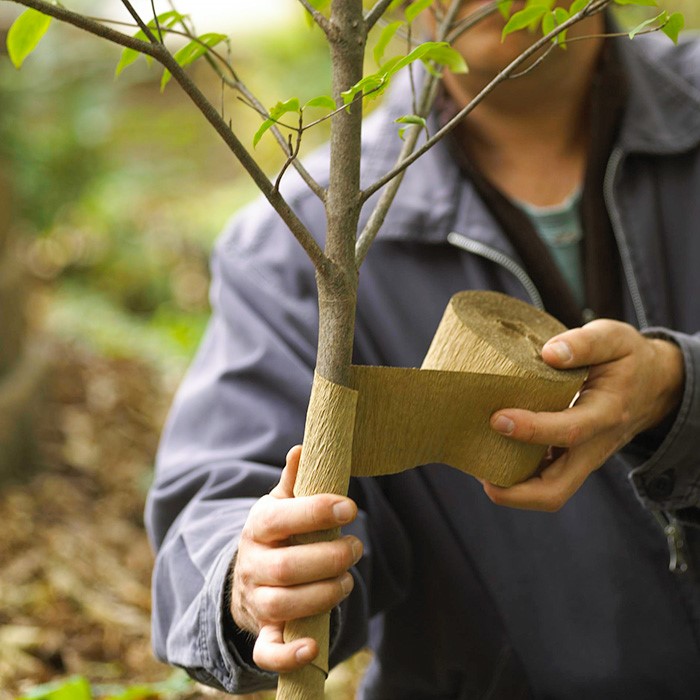
- WATER trees before freeze-up. Tree roots remain active until soil temperatures dip below 40 degrees. Watering is especially beneficial for evergreens, which transpire tiny amounts of moisture through their needles throughout the winter months.
- HERBICIDE APPLICATIONS should be done with caution around trees. Herbicides are most effective on lawns in the fall, but some herbicides can be detrimental to tree roots, especially with repeat applications. Spot spray, if possible. Learn to tolerate a few weeds – a diverse habitat is pollinator-friendly!
- PRUNING is best done when trees are dormant, so leave that task until early spring. Routine pruning in early spring before buds swell enables the tree to naturally seal off pruning wounds most effectively. Broken branches should be properly pruned as soon as they are noticed. Don’t use pruning sealer, tar or paint on any tree cuts or wounds. A proper pruning cut doesn’t require sealer, and no amount of sealer can fix a bad pruning cut.
- FIREWOOD. For those who burn wood, fall is a popular time to harvest and cut firewood, or purchase it from a seller. Keep invasive pests away by purchasing or harvesting firewood locally. Transport of infested firewood is most likely how emerald ash borer (EAB) will make its way to North Dakota. With new finds in 2018, EAB is now established and confirmed in 35 states including Minnesota and South Dakota, and Winnipeg. This invasive pest is closing in upon North Dakota. Don’t move firewood. Protect North Dakota’s trees!
- Links for tips on planting, pruning, and maintaining trees: http://treesaregood.org/treeowner/treeownerinformation.aspx
- Information on NDSU Woody Plant Improvement program and NDSU releases: https://www.ag.ndsu.edu/plantsciences/research/woody-plants
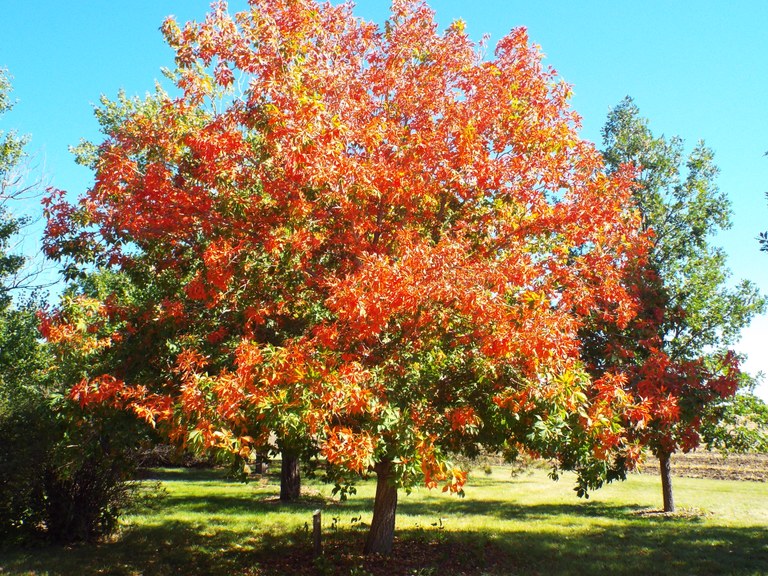 Happy Fall!
Happy Fall!
Gerri Makay
Gerri.Makay@ndsu.edu
ND Forest Service, Community Forestry Program Manager
Some Changes, but Familiar Faces, at Farm Management Education
Many local producers rely on services and advice offered by the impartial Farm Management Educators across the state of North Dakota, and the Carrington REC is pleased to continue to host ND Farm Management Education in our area.
The purpose of the FME program is to assist clients in meeting business and personal goals through the use of quality records and sound business decisions. North Dakota FME provides instructional assistance in four major areas:
- Business and family goal setting
- Farm and ranch business records and accounting
- Planning, including budgeting, marketing, and succession
- Business analysis
The Carrington FME program began in 1980 with Steve Metzger, who had an office in the Carrington High School Ag. Ed. Building, where he taught high school vocational agriculture classes and worked with adult producers part-time. The FME program moved to full-time status in 1985, and in 1997 Steve moved his office to the Carrington REC. Until last year, local instructors have been employed by Carrington Public Schools. Steve “retired” to part-time status in 2015.
After the resignation of Jory Hansen this summer, the program has transitioned employment and management to Lake Region State College, but still has its office at the CREC. The FME program will operate as it has in the past, with the same services and programs.
Joel Lemer is one of 16 FME instructors across the state, but he is not new to agriculture nor to education. Joel most recently served eight years as the Agriculture and Natural Resources Extension Agent for Foster County, and prior to that was an Ag. Ed. Instructor and FFA advisor at Carrington Public Schools for 28 years. Joel is originally from Drake, ND, is married and has three adult children and five grandchildren.
Joel recently mailed packets to current participants, outlining new procedures required by Lake Region State College. Most notable is a change in registration: clients enroll as students at Lake Region, and pay college tuition instead of program fees. (Farm Management Education 241 is for producers just beginning the program, and FME 242 is for veterans.) Fees have increased slightly, but producers earn college credits for their participation. Clients must enroll for both semesters to retain year-round coverage. New clients are welcome!
As with all higher education, there are deadlines. Enrollment for the Fall Semester is due by September 15.
And Steve Metzger? He’s continuing to work part-time, now as staff at Lake Region State College, with his office still at the CREC.
If you have Farm Management Education questions please call 701-652-2951 or visit Joel/Steve in person at the CREC.
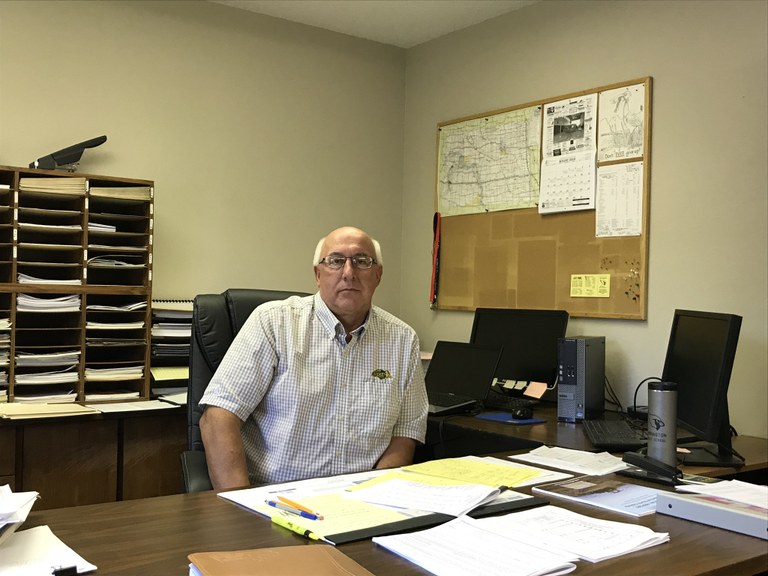
Welcome to the CREC, Joel!
CREC Staff
NDSU.Carrington.REC1@ndsu.edu
Ergot and Cattle Feed Don’t Mix
Grain screenings are routinely used as cattle feed. Since the price of screenings is substantially reduced compared to other feedstuffs, it is an economical feed source for the cattle producer. The use of this feed source also helps grain farmers avoid discarding or landfilling the screenings.
HOWEVER, this year’s small grains or small grain screenings may contain ergot. Some fields may be affected with ergot more or less than others. There are purchasing elevators that have rejected small grains this season because of ergot levels. The next question is: “If the elevator rejected the grain can I sell it or use it for cattle feed?”
The poison is in the dose and dilution is the answer. Let’s use this example: The elevator rejected the grain since it was over 0.5% ergot bodies by weight. The NDSU toxicologist’s recommended maximum is 0.1% ergot by weight. If the feed was 0.2% ergot by weight, then limiting this feed at 50% of the ration by weight may not show symptoms of toxicity. Another example: if the feed was 2.0% ergot by weight, then limiting this feed at 5% of the ration by weight may not show toxicity.
Be careful to obtain a representative feed sample. If the sample containing ergot was not representative of a more concentrated portion of the feed, then you will be mistakenly feeding a more toxic ration.
Ergot comprises multiple compounds including ergotamine, ergovaline, ergocryptine, ergocornine, and ergocristine. The compounds are persistent vasoconstrictors; they reduce the blood flow. Reduced blood flow to the extremities can cause loss of hooves, tails, and ears. In the summer, the cattle cannot dissipate heat and are heat stressed. In the winter, reduced blood flow to the extremities can lead to frostbite. Decreased fertility, abortion and poor cattle performance are other symptoms.
Ergot-containing feed can be analyzed for the active ergot compounds. The NDSU Veterinary Diagnostic Toxicology laboratory can analyze ergot-containing samples for a fee. https://www.vdl.ndsu.edu/contact
Ergot can affect rye. The long black ergot bodies in rye are easily detected. Ergot in wheat is described as black or dark purple hard outside shells with white to grey insides.
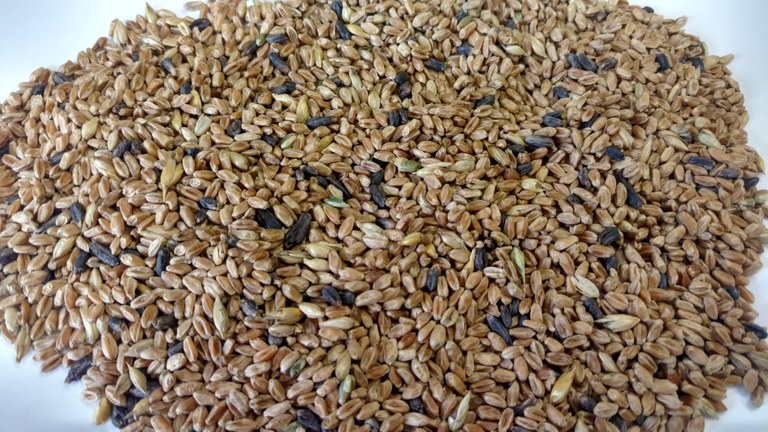
The picture above has about 80 ergot bodies per 1000 kernels of wheat. Roughly, that’s 8% ergot. That would be limit feeding to 1% of the cattle ration. If you decide to feed at 1% of the ration, be sure to have excellent mixing capabilities since a ‘hot spot’ or an inadequately mixed feed could harm a calf or cow.
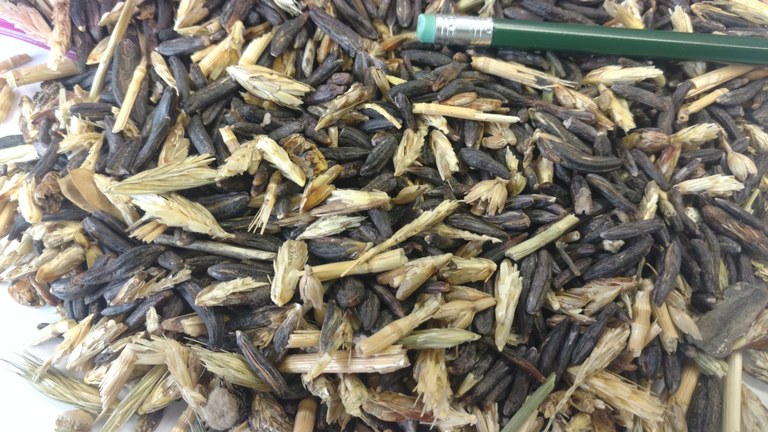 Screenings should always be suspect for ergot.
Screenings should always be suspect for ergot.
Karl Hoppe, Ph. D.
Karl.Hoppe@ndsu.edu
Extension Livestock Specialist
What App Should I Use to Fly My DJI Drone on My Farm?
First of all, why DJI drones? DJI drones are among the most popular and easy to fly drones on the market today (models such as Phantom and Mavic). The choice about what app to use should be based on the goals of the flight.
There are many apps that can be used to fly a drone. I will focus on three free apps (DJI GO 4, DJI GS Pro, and Pix4DCapture) that I often use to fly our Phantom 4 Pro. With the exception of DJI GS Pro, the apps are available for both Android and IOS devices. I am not going to dig into too much detail about each app. There is a wealth of information online covering those topics. My goal is to provide some guidance on what app to use for different purposes on your farm.
If you are planning to fly a drone around to capture videos and pictures of your property, DJI GO 4 would be my recommendation. The app will give you a live view from the camera and allow you to easily switch between picture and video, among many other features.
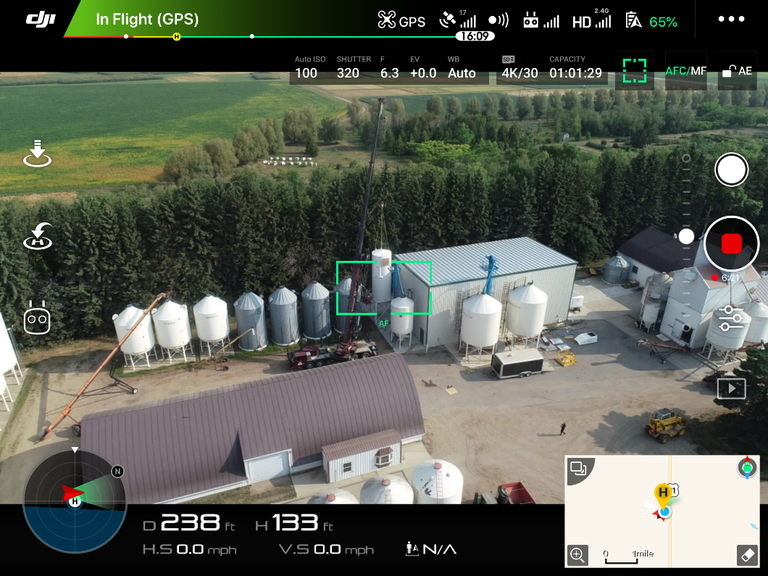
Figure 1. DJI GO 4 app main screen.
If you are planning to use your drone as a scouting tool, the DJI GS Pro would be my recommendation. The app allows you to create a route of waypoints (Figure 2) just by touching the screen. The route can be adjusted by dragging the points around and/or by adding points. Once the route is finalized, one can set actions for each point (hover time, gimbal angle, capture a photo, etc.). Once parameters are set for one point, they can be pasted to all points. On this type of mission, pictures will be taken at each point only, which is different from a survey mission.
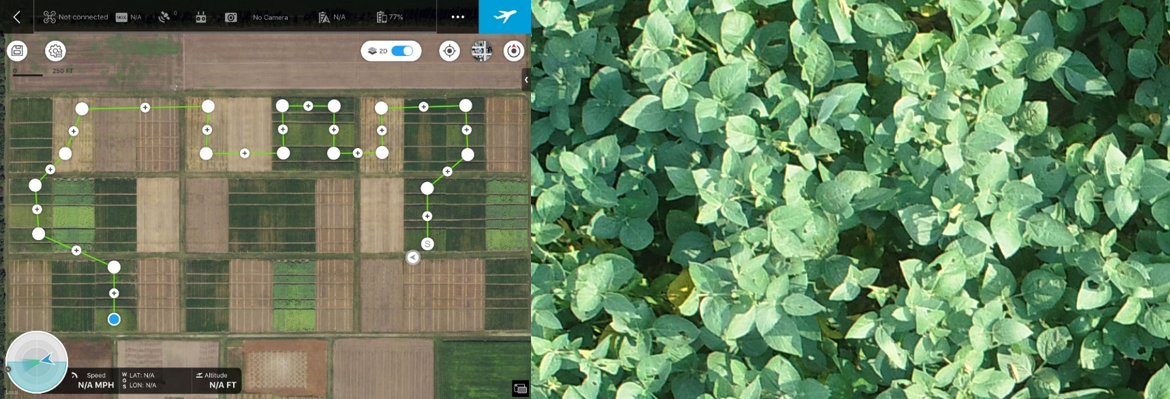
Figure 2. DJI GS Pro waypoint mission example (left) and a zoomed in picture collected during that mission (right).
To fly a survey mission (to map a large field), I would recommend Pix4Dcapture (Figure 3). Two of the reasons I like Pix4Dcapture are the templates for the different types of missions (polygons, grid, double-grid, and circular), and because it saves the previous missions (under project list) and the “duplicate” feature allows you to fly the same mission over and over again. The grid and duplicate mission features have saved me a lot of time on mission planning!
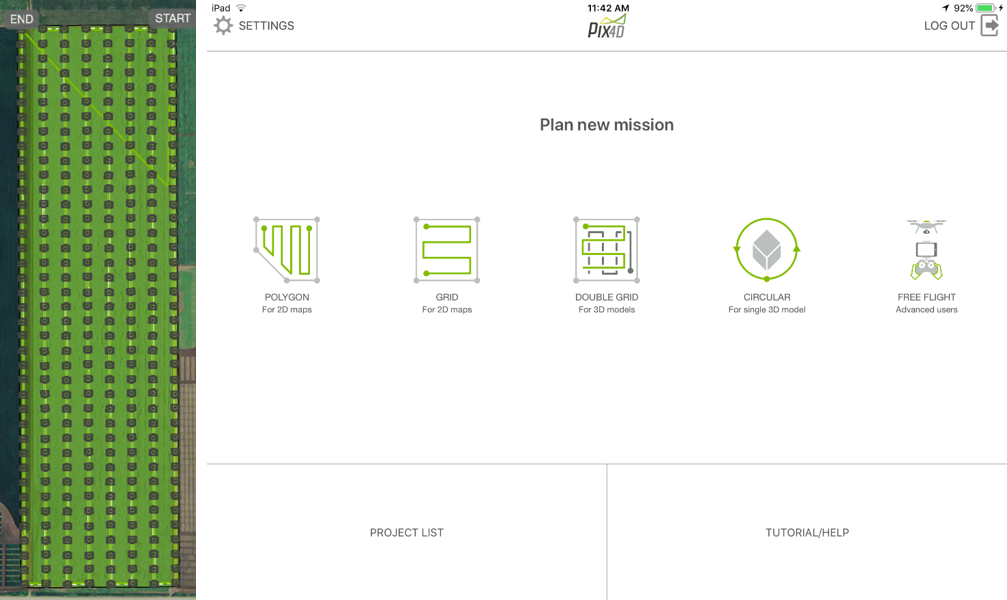
Figure 3. Grid mission example (left, approximately 40 acres) and Pix4Dcapture app main screen (right).
If you need help using the apps listed above, you are welcome to send me an email (Paulo.flores@ndsu.edu) or give me a call (701.652.2951), and I will do my best to assist you. The last thing that I will mention, and it applies to all apps, is that you will have a better experience flying drones using a tablet type devices (larger screen), instead of using smaller screen devices (smartphone).
Paulo Flores, Ph. D.
Paulo.Flores@ndsu.edu
Precision Ag Specialist
Phosphorus Fertilization of Wheat Significantly Improved Yield and Crop Vigor
Objective
To assess yield impact of phosphorus on four spring wheat varieties grown in North Dakota.
Method
- Varieties grown (2018): Albany, Bolles, Linkert, Prosper
- Triple super phosphate fertilizer was broadcast and incorporated one day before seeding, at the equivalent rate of 0, 12, 24 lbs P2O5/ac.
- Another treatment was applied with the seed at 7.2 lbs P2O5/ac.
- Soil test for P was low (4 ppm). The NDSU phosphorus recommendation for spring wheat is that, application with the seeds should be reduced to one third of the broadcast rate.
Results
- Yields were significantly different between varieties in this order: Albany (54.2 bu) = Prosper (53.7 bu) > Bolles (48.7 bu) > Linkert (44.1 bu).
- There was no clear evidence to suggest that phosphorus had significantly more impact on yield of one variety than another.
- Application of 7.2 lbs P with the seed significantly improved grain yield by 6.4 bushels compared to the control (0 lbs P), and by 4.2 bushels compared to 12 lbs P applied by broadcasting.
- Yield improved by 4.9 bushels with 24 lbs P broadcast and incorporated, compared to the control.
- Meanwhile, yield differences were not significant between the control and 12 lbs rate, and between 12 and 24 lbs P rates.
- Crop vigor was assessed 42 days after planting, by measuring light reflectance (NDVI) from the crop canopy of each plot using the GreenSeeker sensor.
- The most vigorous treatments were at P = 7.2 lbs seed applied, and 24 lbs broadcast and incorporated.
Conclusion
- In-furrow application of starter phosphorus at one third the recommended broadcast rate produced the highest yields. This is consistent with the in-furrow recommended rate of phosphorus as a percentage of the broadcast rate for yield optimization in the current growing season.
- Consideration for rates to apply must include, in addition to soil test, cost of application and grain price. For more on phosphorus recommendation for spring wheat visit this page by Dr. Dave Franzen https://www.ag.ndsu.edu/publications/crops/fertilizing-hard-red-spring-wheat-and-durum-1/sf712.pdf
Jasper M. Teboh, Ph. D.
Jasper.Teboh@ndsu.edu
Soil Scientist


